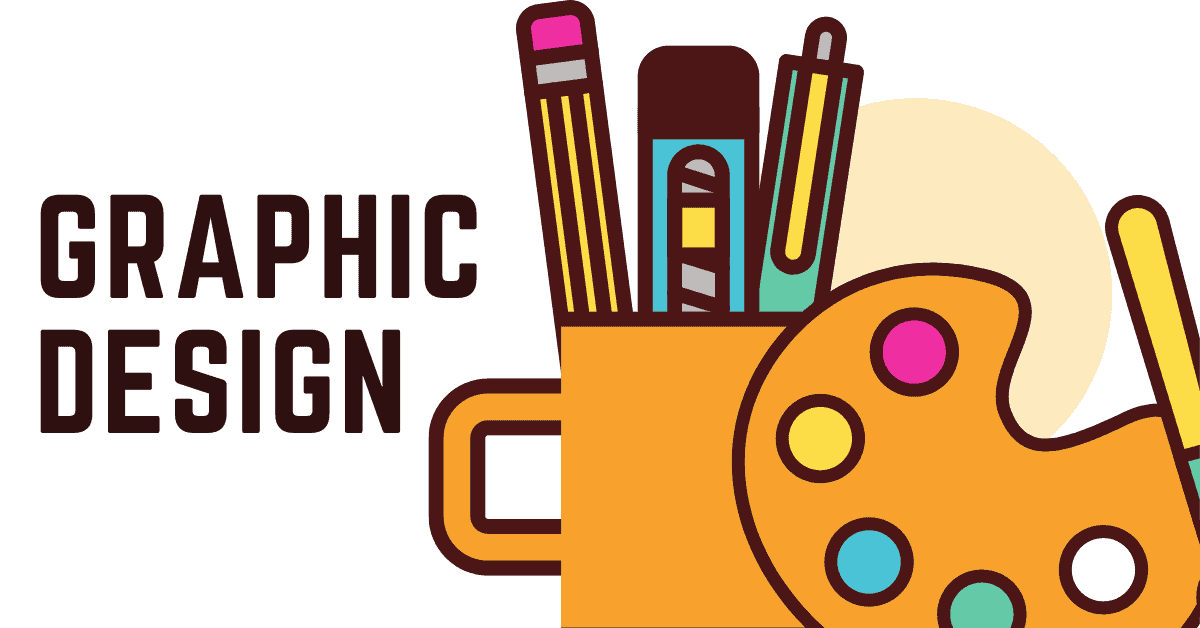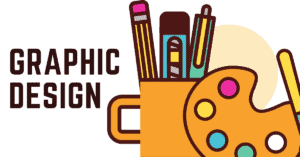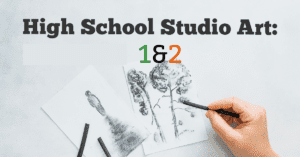Course Description
This course is year-long, and students who complete both semesters will receive a full high school credit in Visual Arts/Fine Arts. Students may also choose to complete the first semester for 0.5 credits. Students must take the first semester to be enrolled in the second semester of this course.
This Graphic Design course provides an immersive, project-based introduction to the elements, principles, and processes of graphic design — essential components of a foundational skillset for careers in the visual arts, including design and communications in any field.
Students engage with a series of sequential design exercises and creative challenges, including developing logos, icons, emojis, type/letterforms, patterns, posters, maps, and more.
We’ll use industry-standard design software, namely Adobe Illustrator, Photoshop, and InDesign, as well as a variety of free online software and physical tools like pens and pencils on paper.
Subjects covered in this course will include:
- Gaining a high level of familiarity and comfort with using Adobe software to generate original works of design.
- How image resolution works and the fundamental difference between raster/pixel-based and vector/shape-based graphics.
- Engagement with the iterative design process, from ideation and rough sketches to critique, proofing, and revision before calling work complete.
- The “gestalt” principles of design affecting our perception, including proximity, similarity, closure, continuity, figure/ground relationships, and establishing a visual hierarchy — all in order to create visual efficiency in conveying the intended message and quality of visual Unity needed to heighten the desired effect.
- An overview of color “theory,” including updating a common misunderstanding of how color works in both pigment and screen-based settings. Using a color wheel software to create color harmonies.
- Using written identity guidelines that describe the look and feel of successful outcomes to help steer the many design decisions to be made on behalf of a given project.
- Experience with the art of making type/letterforms (type design) and typography (the art of arranging type).
Course Objectives:
After completing this course, student will be able to:
- Use analog and digital tools to engage in the creative process to develop effective solutions to visual and textual problems.
- Tap into their own interests, passions, concerns, and ambitions as content for coursework.
- Experience, conceive and create visual art and design with greater sensitivity and success.
- Consider the needs of a client, an audience and other contextual factors for each project.
- Communicate with greater clarity as to the qualities of designs made by themselves and others, enhancing abilities to create for others and to be able to hire others to produce works that work for them.
Required materials
- a sketchbook, or loose paper without lines will work
- cheap mechanical pencils with eraser
- 18″ cork-backed ruler
- black markers—fine-tipped and brush-tipped (chisel-tipped is a plus!)
- an opaque white poster marker (optional, but highly-recommended for editing ink sketches)
Most of these can be found elsewhere, but for your convenience here’s a link to a shopping list at the Blick Art Supplies store: https://www.dickblick.com/
Software:
We’ll be using Adobe Illustrator, Photoshop and InDesign, which do require a single monthly subscription to their “Creative Cloud” at roughly $20 per month.
*While free alternatives do exist, they are limited, much harder to learn and use, and also far less applicable to professional settings, so using the Adobe tools is very highly-recommended for making the most of this class. No prior experience with any of those is required or expected.
Course Structure
Most class meetings will begin with a look at the previous week’s homework, followed by a lecture/discussion and technical demonstration of next steps.
Each week’s homework will be listed and covered during class. 1-2 hours of homework will be expected each week, and will sometimes entail watching a video online that I’ve found or created to help work and learn a particular topic at your own pace.
The information shared and technical knowledge will be largely sequential, so missing previous classes could make it hard to work on current work, so students who miss class will be encouraged to review the previous meeting.
Who should enroll?
This course is recommended for 10th-12th grade students interested in art and design that have taken the Fall semester of Graphic Design. While exceptions could be made, and individual tutoring is available, it may be frustrating for students to begin midway through the year.
Technology Requirements
- A computer with with high-speed, broadband Internet, webcam and working microphone for live meetings and watching recorded lectures
- Students will be encouraged to share their work-in-progress via screen-sharing on Zoom to get help and feedback, and that can require a security password to enable.
- A camera — a standard phone camera will work well
- An additional screen to allow for watching meetings while working on screen-space consuming software (optional but very highly recommended)
Evaluation and Feedback
Feedback will be offered in each class and, in some cases, in written form. Scores will be applied to most assignments within the week following the first due date, with lower scores usually meaning the directions weren’t followed or insufficient work was completed.
Students are encouraged to set up individual meetings to get more feedback and to work through any conceptual, aesthetic or technical impasses.
Assignments can be revised for more credit up until the end of the semester.
Participation in class meetings is worth 25% of the grade, so that earning an A or B requires coming prepared and engaging with the instructor and classmates during our live meetings.
Communication
Parents and students can contact me via email and can expect a response within 24 hours. They can also set up a Zoom meeting via http://thebrianreeves.





Reviews
There are no reviews yet.